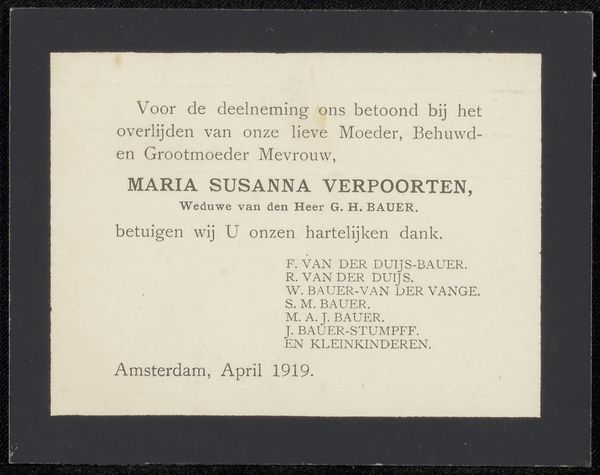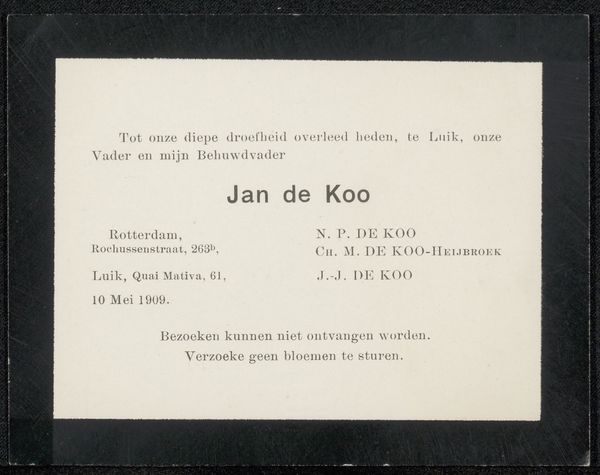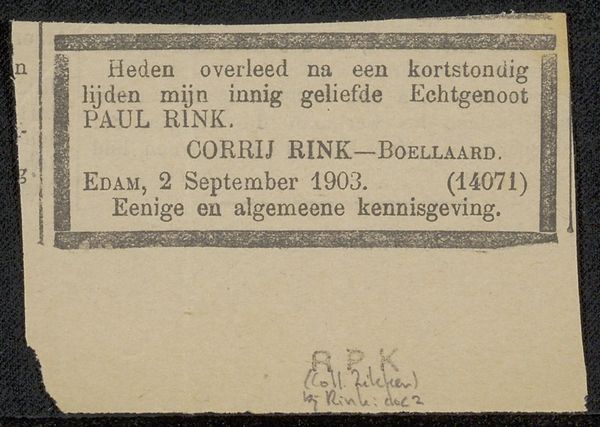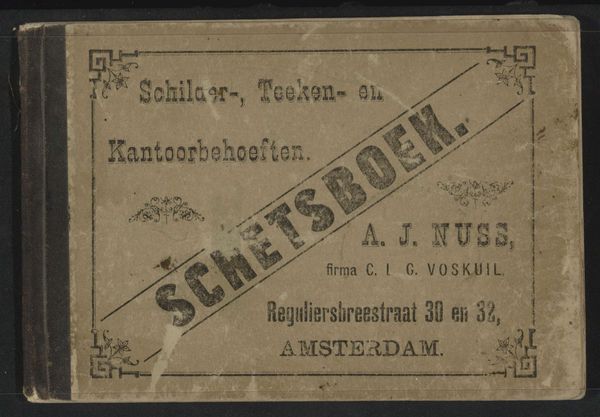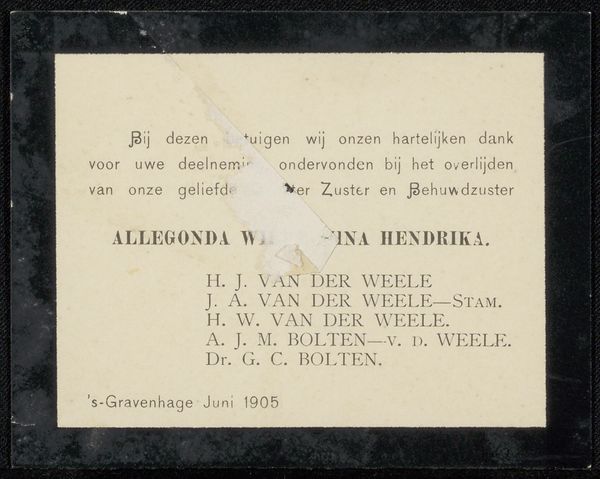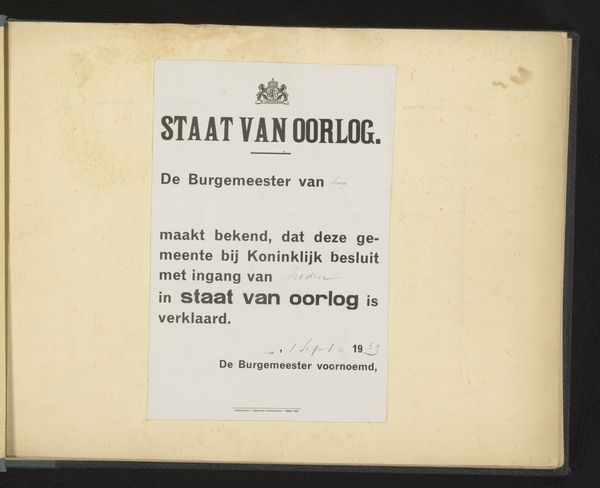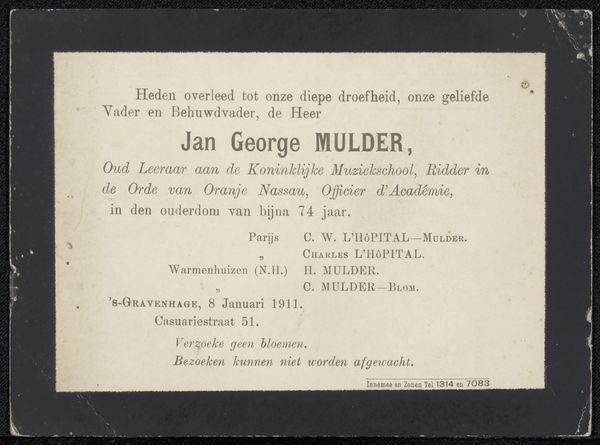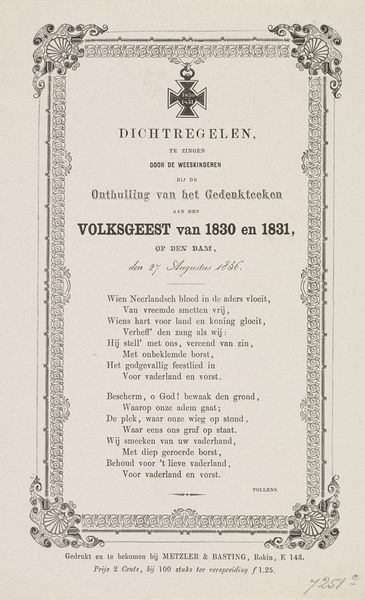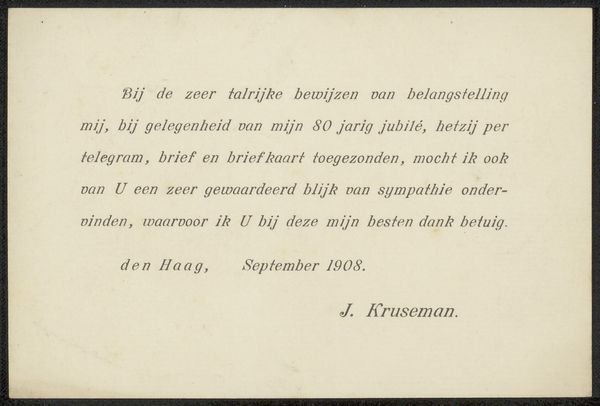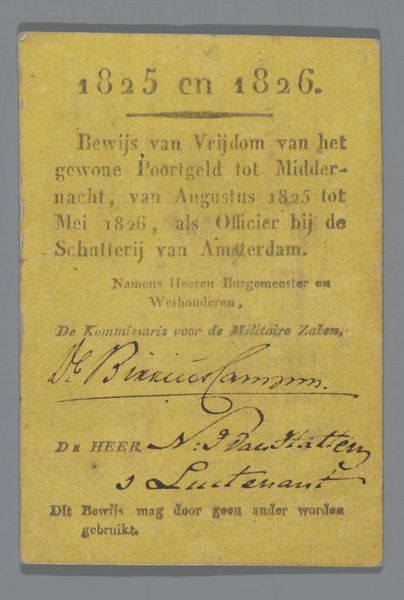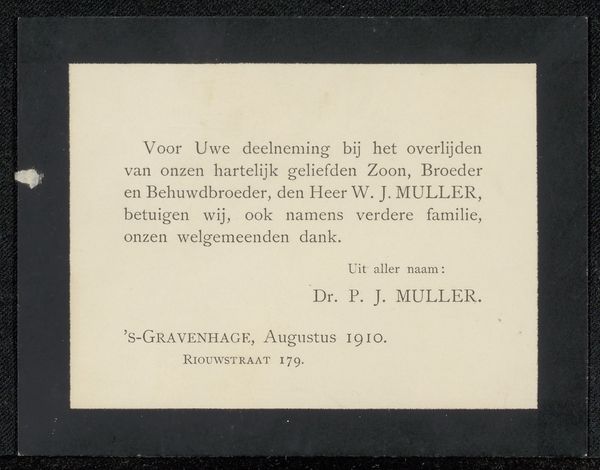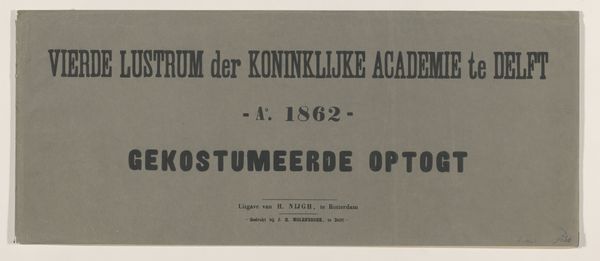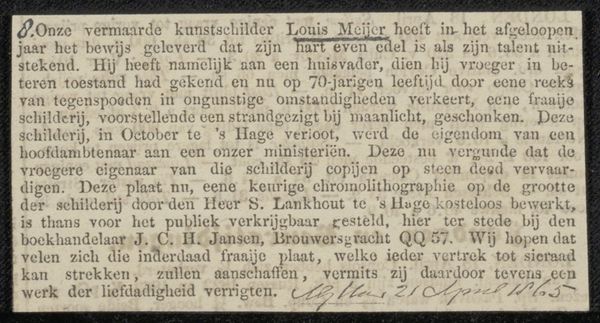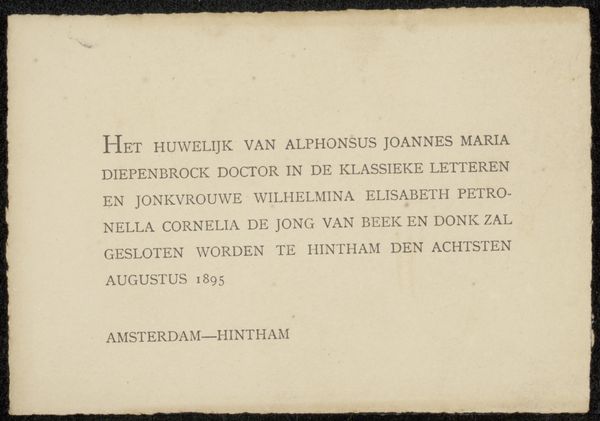
print, paper
#
portrait
# print
#
paper
#
text
#
calligraphy
Copyright: Rijks Museum: Open Domain
Editor: This print, likely dating from the late 19th century, is titled "Overlijdensbericht aan Philip Zilcken"—or "Obituary to Philip Zilcken." It's essentially a paper notice, a death announcement. There's something strikingly direct and vulnerable about its stark presentation. What stands out to you? Curator: It's interesting to consider how such ephemera functioned in the late 19th century. This wasn’t simply a private communication; it had a public function, shaping the social landscape. Notice how it carefully delineates Jan Vrolijk's identity: a husband, a father, an artist, and a Knight. What does it suggest about the role of social status even in death announcements? Editor: It's like crafting a public persona, even at the end. The inclusion of "Ridder in de Orde van de Eikenkroon"—Knight of the Order of the Oak Crown— feels deliberate. Was this common? Curator: Absolutely. Think about the rising middle class at that time. Memorializing accomplishments served to legitimize social standing. What else can you observe about its design and the culture surrounding it? Editor: The calligraphy lends a certain gravitas. Though simple, the notice conveys solemnity and dignity. Also, it feels quite economical, very different than the elaborate displays of mourning sometimes associated with the Victorian era. Curator: Exactly. It points to a spectrum of funerary practices. While some grieved with ornate excess, others favored understated pronouncements. Also, its connection to Zilcken hints at a network of artists; we get a glimpse of the social fabric of the artistic community through these kinds of public documents. Editor: I see how this small piece of paper reveals a broader picture about society and artistic circles at the time. Thank you! Curator: My pleasure! Examining everyday artifacts allows us to better comprehend historical complexities, revealing the nuances behind historical assumptions.
Comments
No comments
Be the first to comment and join the conversation on the ultimate creative platform.
